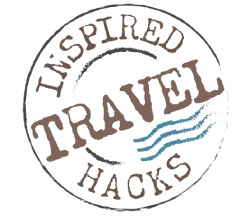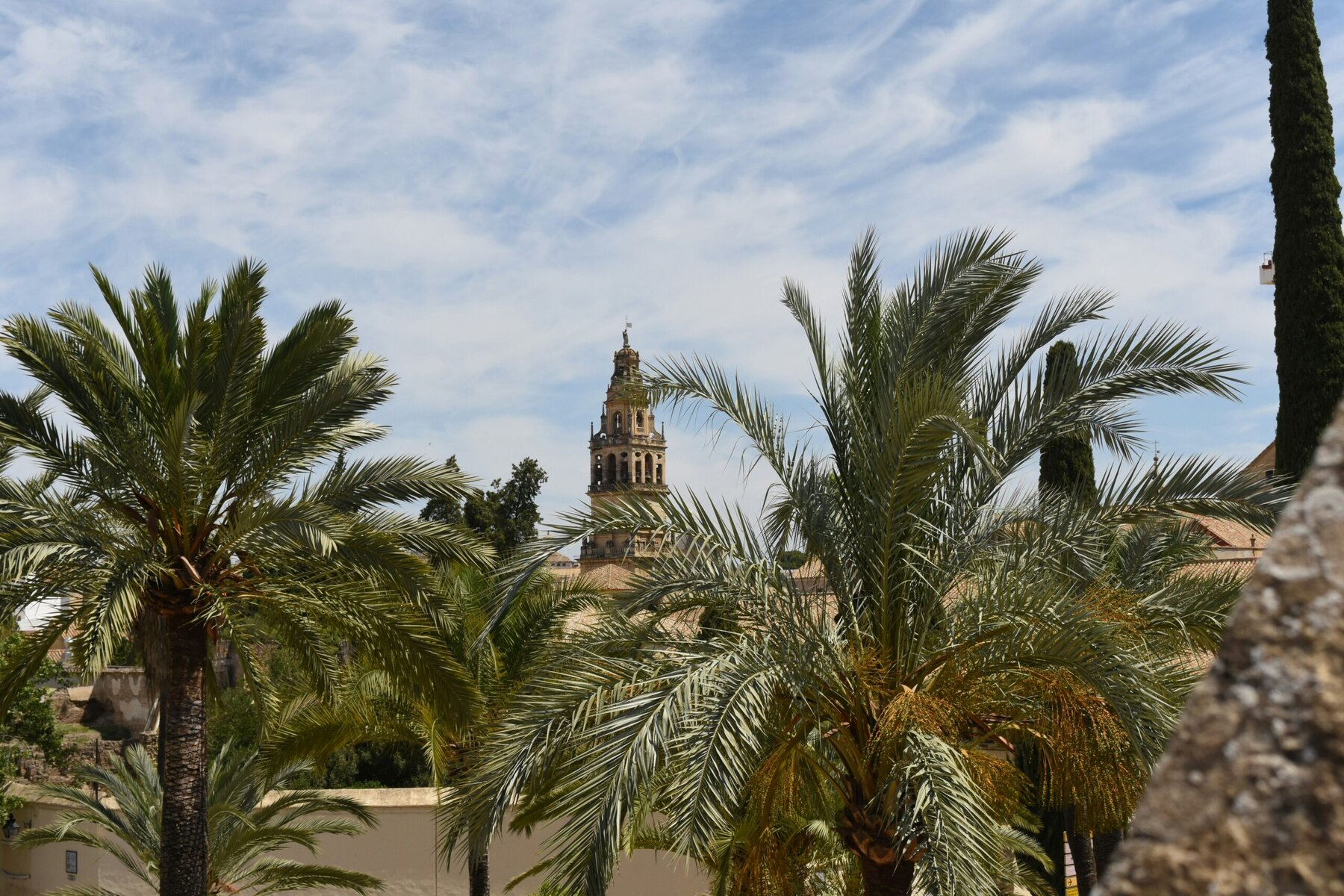
Best Things To See & Do In Córdoba
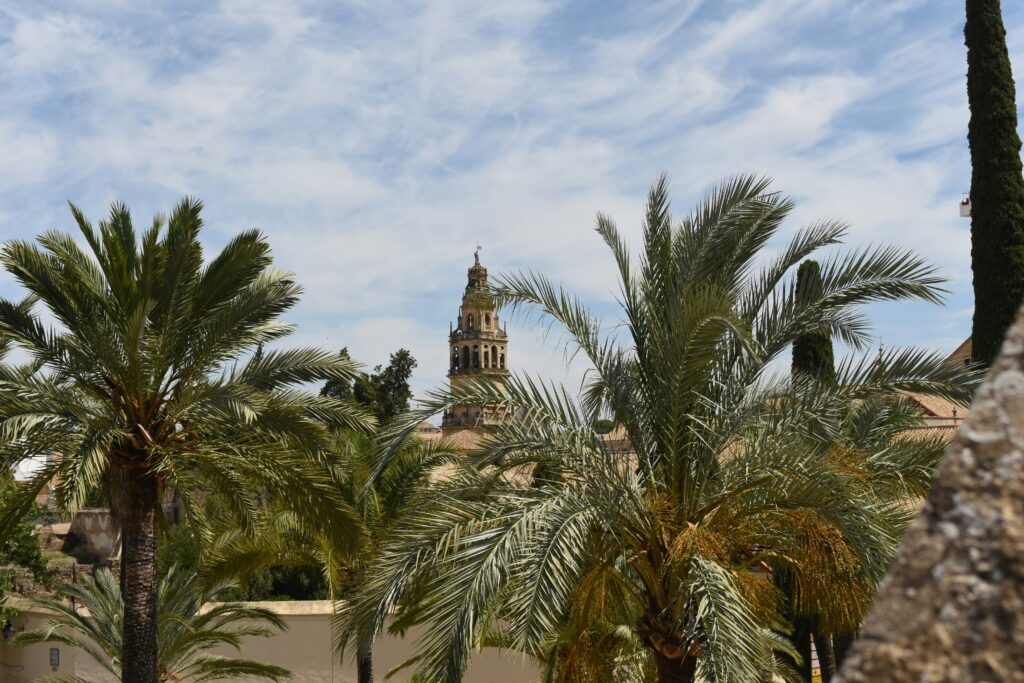
Hidden in the heart of Andalusia, is the stunning city of Córdoba. A city that was once a dazzling hub of culture and learning. Today, it is the most wonderful place to spend time in, exploring its grand architecture, winding medieval streets and indulging in mouthwatering food. In this blog post, I’ll cover all the best things to see and do in Córdoba. Get ready to be inspired to visit this city. You will not be disappointed!
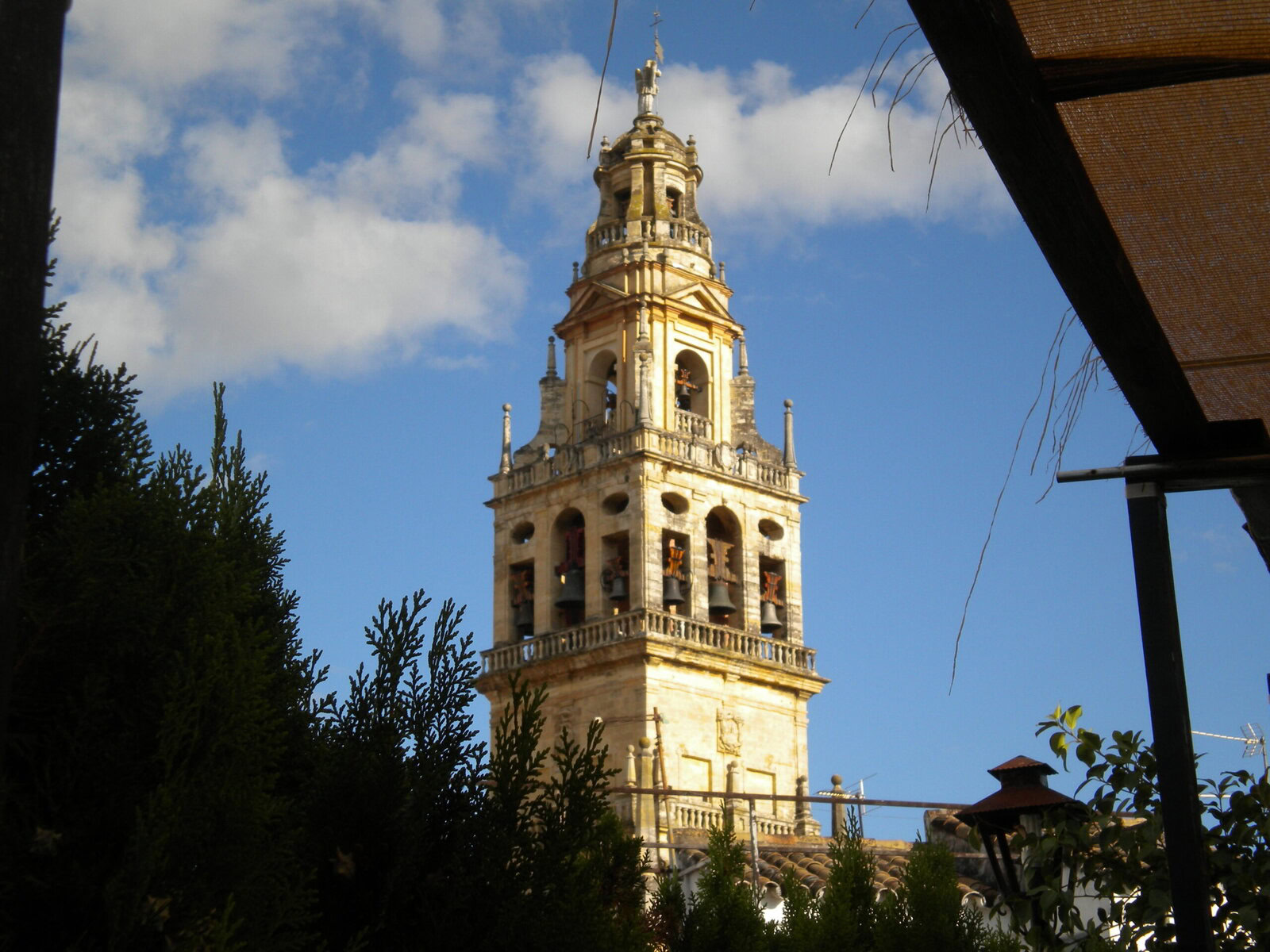
Why Visit Córdoba
Córdoba has so many things to see and do. The key highlights that makes this city a must visit are:
⭐️ Mezquita-Cathedral – A breathtaking cathedral, that blends Islamic and Christian influences, complete with its hypnotic archways and a towering Renaissance nave.
⭐️ The Jewish Quarter (La Judería) – A historic neighbourhood lined with whitewashed houses, colourful flower pots, quaint shops and cafes.
⭐️ Alcázar de los Reyes Cristianos – A fortress-palace with lush gardens, fountains, and centuries of royal history.
⭐️ The Roman Bridge (Puente Romano) – A majestic structure that has connected the city over the Guadalquivir River since the 1st century BCE, offering great views of the city skyline.
⭐️ The Cuisine – A great place for foodies. Here you can enjoy local specialties like Salmorejo (a chilled tomato soup), hearty stews, tapas and churros dipped in rich chocolate.
A Short History Of Córdoba
Córdoba’s story begins in Roman times, when it was founded as a vital settlement on the banks of the Guadalquivir River. Under Roman rule, it quickly grew into a thriving city, complete with grand temples, roads, and bridges, including the iconic Roman Bridge, which still graces the city today. This early period laid the foundation for Córdoba’s importance as a key cultural and economic hub in the Iberian Peninsula.
The city truly flourished, however, during the Islamic Caliphate of Córdoba in the 8th to 10th centuries. Serving as the capital of Al-Andalus, Córdoba became one of the largest and most advanced cities in Europe. It was a beacon of learning, home to brilliant scholars, vast libraries, and remarkable architecture. The Mezquita-Cathedral stands as a powerful testament to this golden age, its stunning arches and intricate details reflecting the city’s Islamic heritage.
Córdoba’s fortunes shifted in 1236 during the Christian Reconquest, when it was captured by King Ferdinand III of Castile. The city embraced a new era, blending its Islamic traditions with Christian influences. Churches were built over mosques, and landmarks like the Alcázar de los Reyes Cristianos were transformed for new purposes. This unique fusion of cultures remains visible in Córdoba’s architecture, festivals, and traditions today, creating a city where history and heritage continue to thrive.
So, now let’s move on to the best things to see and do in Córdoba…
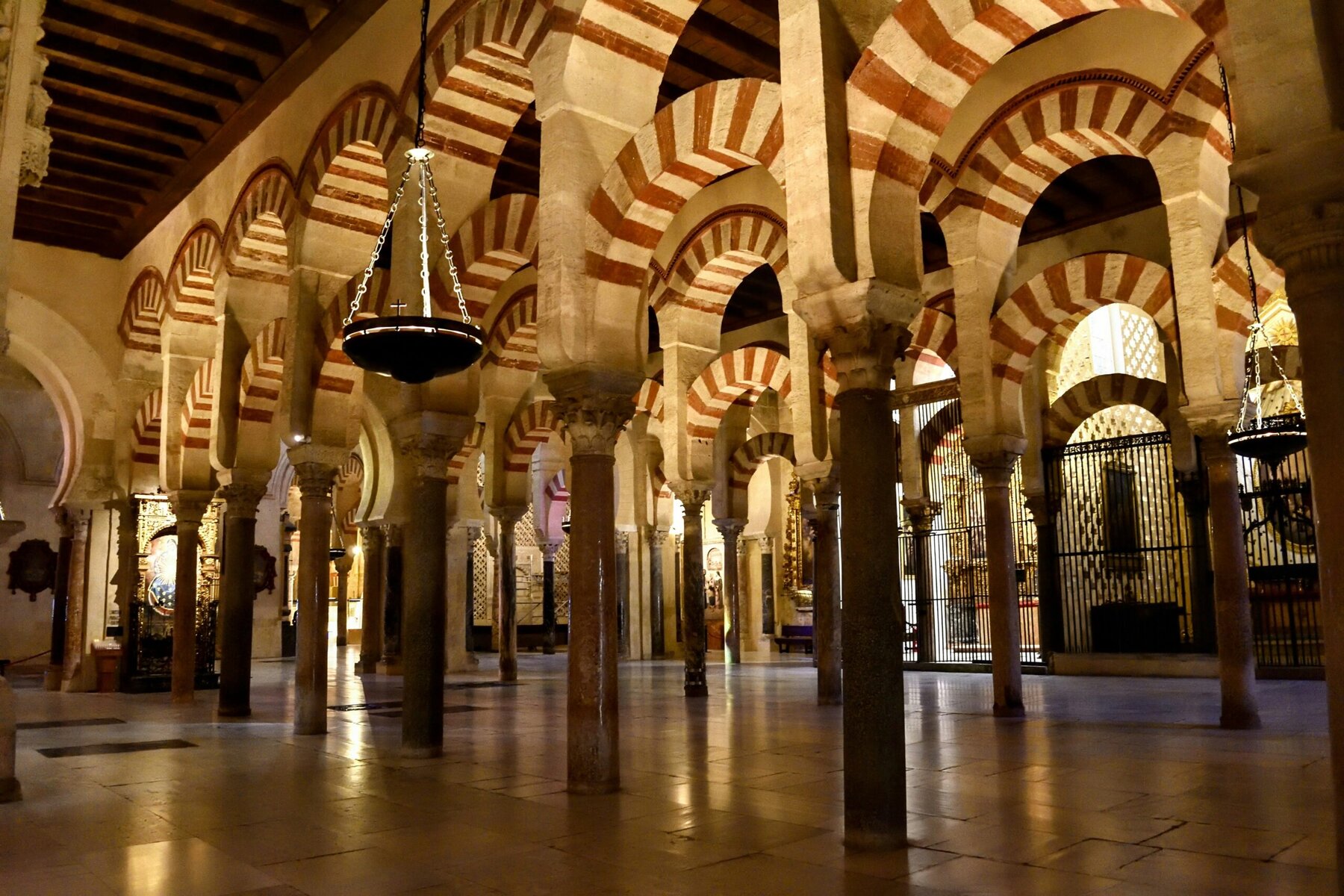
Visit The Mezquita-Cathedral
One of best things to see and do in Córdoba is to visit the grand Mezquita-Cathedral. This is one of the most remarkable architectural and historical marvels in the world. Originally built as a mosque, in the 8th century under the rule of Abd al-Rahman I, it later became a cathedral following the Christian Reconquest in 1236. This distinctive blend of Islamic and Christian influences makes the Mezquita-Cathedral one of the best things to see in Córdoba.
Key Highlights Not To Miss:
The Prayer Hall (Hypostyle Hall): A mesmerising forest of over 850 columns made from marble, onyx, jasper, and granite, supporting the iconic candy-cane red-and-white double arches. This sprawling hall radiates with tranquility and showcases the grandeur of Islamic art and engineering.
The Mihrab: The intricate horseshoe-shaped mihrab, a prayer niche facing Mecca, is among the most significant elements of the mosque’s original purpose. Decorated with dazzling gold mosaics and Quranic inscriptions, it’s one of the finest examples of Islamic artistry in the medieval world.
The Christian Cathedral: After the Reconquest, the heart of the mosque was transformed into a Christian cathedral. Its soaring Renaissance-Gothic nave, adorned with ornate carvings and religious imagery, creates a stark yet fascinating contrast with the Islamic elements surrounding it. The cathedral choir stalls, carved with exquisite detail, are also a highlight you can’t miss.
The Bell Tower (Torre Campanario): Originally a minaret, the tower was converted into a bell tower during the Christian period. Climb to the top for panoramic views of the city.
Courtyard of the Orange Trees (Patio de los Naranjos): Located at the entrance, this serene courtyard is shaded by rows of orange trees and features fountains that hint at its Islamic origins. It’s an excellent spot to hang out in.
Key Information
ℹ️ Opening Hours – General opening hours are 10am-6pm. However, these are subject to change based on events and holidays. So check in advance.
ℹ️ Entrance Fees: There is a general admission fee for around €13. Reduced admission for students, seniors, children etc.
ℹ️ Free Visit Times: You can enter for free Monday-Saturday 8:30-9:30 am. This is the quiet hour and ideal for soaking in the peaceful beauty of the building without crowds. Keep in mind that this time is strictly for silent observation.
Further Tips
⭐️ Visit Early: Get ahead of the crowds and plan to visit as early as you can. If you’re visiting during the free morning hour, aim to arrive ten minutes before doors open.
⭐️ Visit the Bell Tower First: If you plan to climb the Bell Tower, head there as soon as you enter. The number of visitors is limited at any given time; with specific time slots.
⭐️ A Night tour “The Soul of Córdoba”: A specific tour after general visiting hours is also available. Here you are guided through the building’s Islamic and Christian heritage, creating a captivating narrative of its rich past. The serene ambiance of nighttime, combined with the lack of daytime crowds, makes this tour deeply atmospheric and unique. Tickets must be booked in advance for this tour.
⭐️ Photography: Early mornings or late afternoons provide the best lighting for snapping photos of both the exterior and interior. Note that flash photography is not permitted inside.
⭐️ Dress Comfortably: While there is no strict dress code, conservative attire is recommended. Also, wear comfortable shoes, especially for the Bell Tower climb.
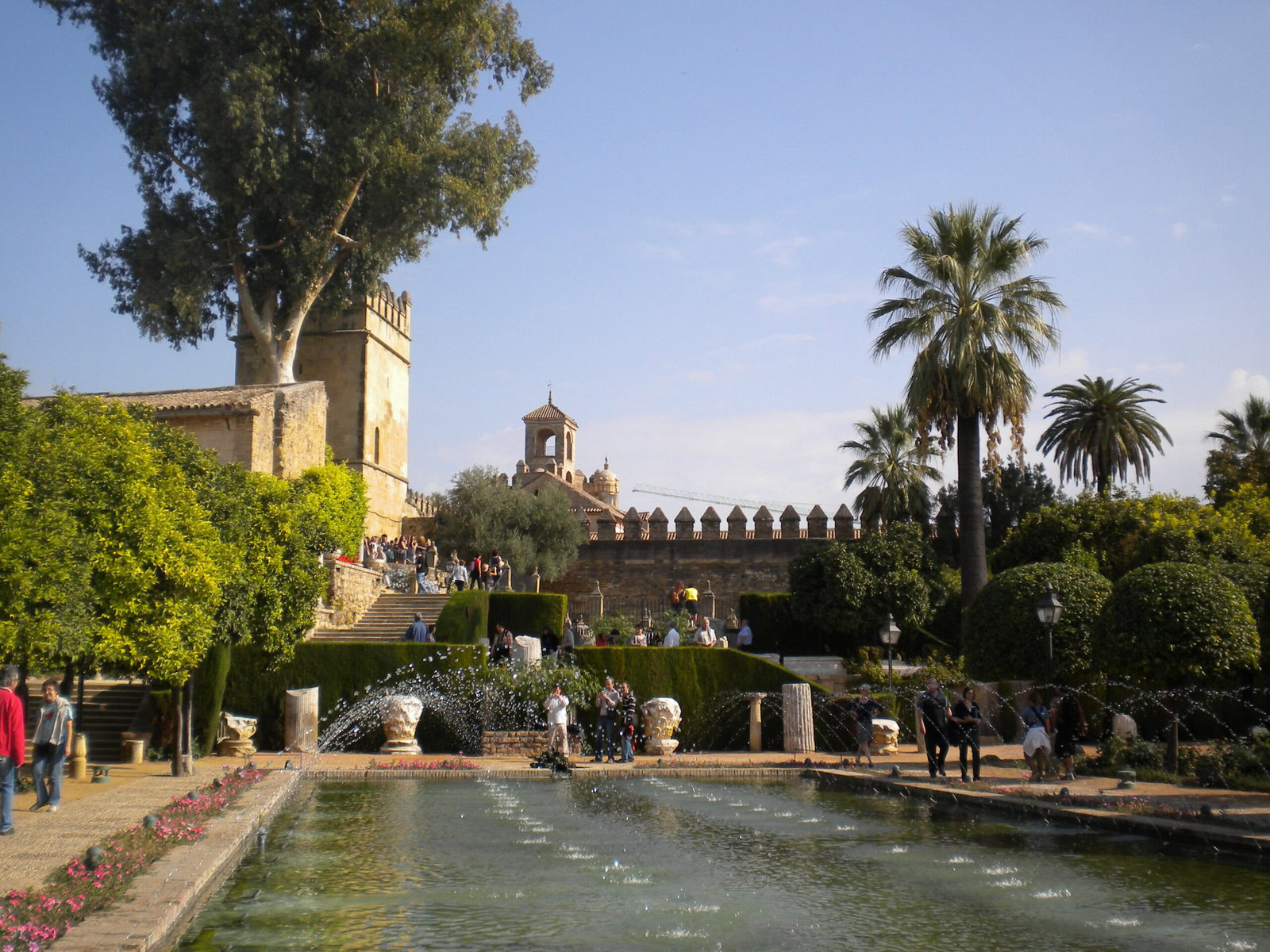
Visit Alcázar de los Reyes Cristianos
The Alcázar de los Reyes Cristianos, or the Alcázar of the Christian Monarchs, is another great place to visit in Córdoba. It is a stunning landmark steeped in history, culture, and architectural brilliance. This fortress-palace showcases a blend of Gothic, Mudejar, and Renaissance styles. Commissioned in the 14th century by King Alfonso XI it became a symbolic residence for Spain’s monarchs, including Queen Isabella and King Ferdinand, who famously held court here during the Spanish Reconquista.
One of the highlights, is its gardens. The gardens feature symmetrical walkways, fountains, and meticulously manicured hedges. You’ll be surrounded by the scents of orange blossoms, roses, and cypress trees while enjoying views of the towering palace walls.
Don’t miss the Mercury Pond, a reflective pool that was originally built during Islamic rule.
The Hall of Mosaics is another must-see, home to an impressive collection of Roman mosaics discovered during excavations in Córdoba.
Finally, climb the Torre de los Leones (Lions’ Tower) for great views of the gardens and Córdoba’s skyline.
Key Information
ℹ️ Opening Hours
From September 16 to June 15:
Tuesday to Saturday: 8:30am-8pm.
Sunday and Bank Holidays: 8:30am-2:30am.
Closed on Mondays
From June 16 to September 15:
Tuesday to Saturday: 8:30am-3pm.
Sunday and Bank Holidays: 8:30am-2:30pm.
Closed on Mondays.
ℹ️ Entrance Fees: There is a general admission fee for around €7. Reduced admission for students, seniors, children etc.
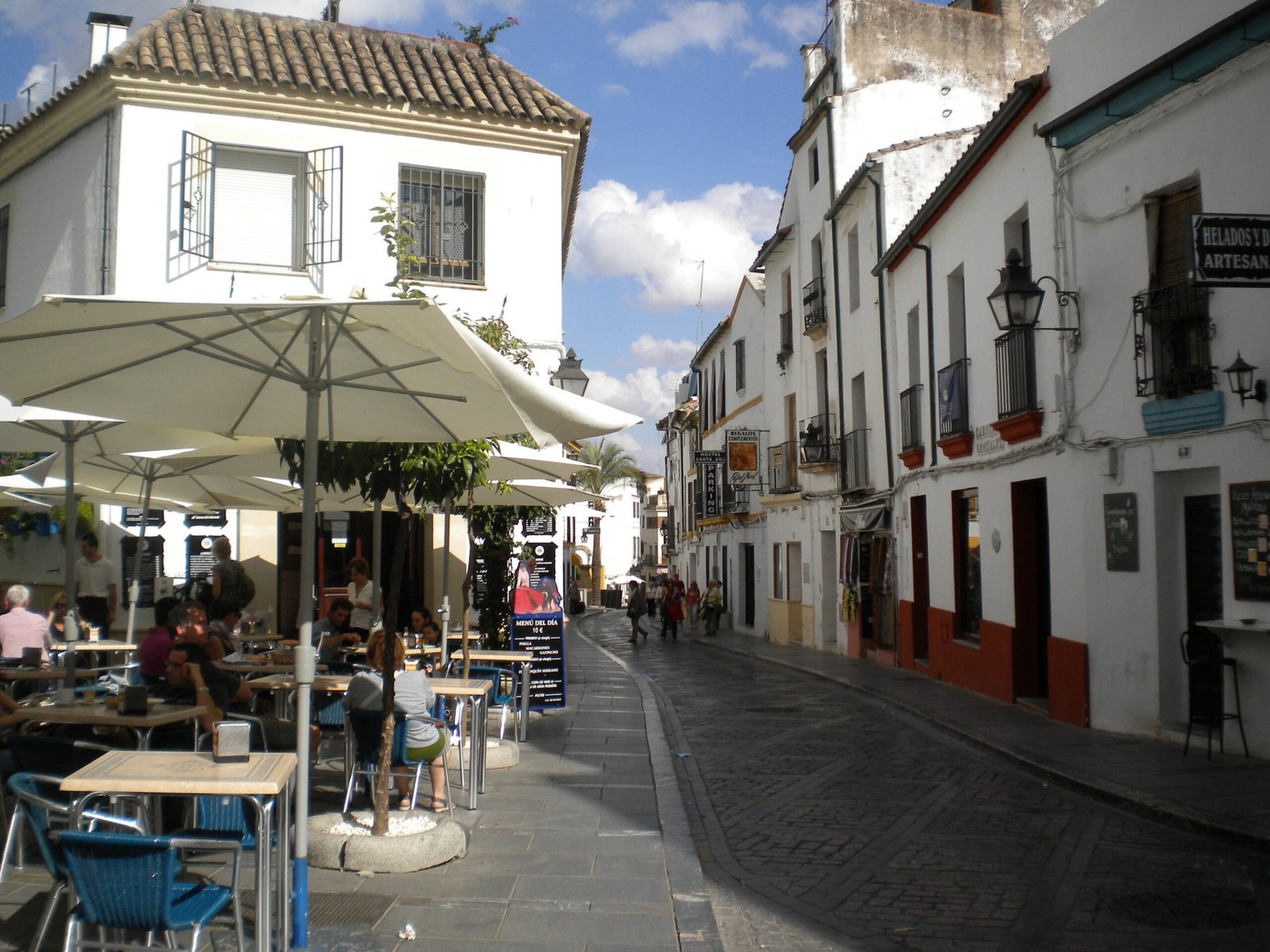
Wonder Around The Jewish Quarter
The Jewish Quarter, or Judería, is a fascinating maze of cobblestone streets, whitewashed buildings, and centuries-old history. Once a thriving hub of Jewish life during the Middle Ages, this neighbourhood is now a UNESCO World Heritage Site. So, spending time wondering around in this quarter is one of the best things to do in Córdoba
An architectural highlight of this quarter is visiting the Synagogue, a rare gem and one of only three preserved medieval synagogues in Spain. Built in 1315, this small yet intricately decorated building has detailed stucco work featuring geometric patterns and Hebrew inscriptions.
Casa de Sefarad (house of memory) is also worth a stop. A cultural centre and museum dedicated to the Sephardic Jewish heritage. Located in a restored historic house, it holds exhibits about Córdoba’s medieval Jewish population.
Another must see key attractionis the Almodóvar Gate. Located at the edge of Córdoba’s Jewish Quarter, this striking relic is one of the few remaining entrances to the ancient city. Built during the Moorish period and later restored in the 14th century, this gate served as a vital point of defence and access into the city.
Casa Andalusí is another site worth visiting in the Jewish quarter. A restored house-museum that offers an insight into the 12th century Andalusian and Moorish culture. This house complete with courtyard, includes the Paper Museum, which showcases the ancient art of paper-making during the Caliphate era.
Finally, in the Jewish Quarter you’ll find a delightful mix of cafes and restaurants where you can try both traditional Andalusian and Sephardic cuisines.
Sephardic cuisine is the traditional cooking of the Sephardic Jews, blending Mediterranean flavours with Middle Eastern and North African influences.
A great spot is Casa Mazal, which has great outdoor seating, perfect for a meal, snacks and drinks.
Key Information
ℹ️ The Jewish Quarter’s narrow streets are mostly pedestrian-only, making it easy to explore on foot.
ℹ️ The Synagogue is open Tues-Sun 9am-3:30pm. Closed on Mondays and holidays. (Free entry for EU citizens and a minimal fee for others).
ℹ️ Casa de Sefarad is open daily from 10am-6pm. Entrance fees are around €4.
ℹ️ Casa Andalusí is open daily from Casa Andalusí is open from 10am-7pm. Entrance fee is around €4.
Further Tips
⭐️ Hidden Courtyards: Many private patios in the Judería open their doors during Córdoba’s famous Patio Festival in May. It’s worth timing your visit to experience this unique tradition.
⭐️ Local Artisans: Stop by traditional shops selling handcrafted leather goods, ceramics, and jewellery. The Judería is known for picking up great souvenirs.
⭐️ Try Sephardic Cuisine: Visit local restaurants to taste Sephardic-inspired dishes, such as stews and sweet treats.
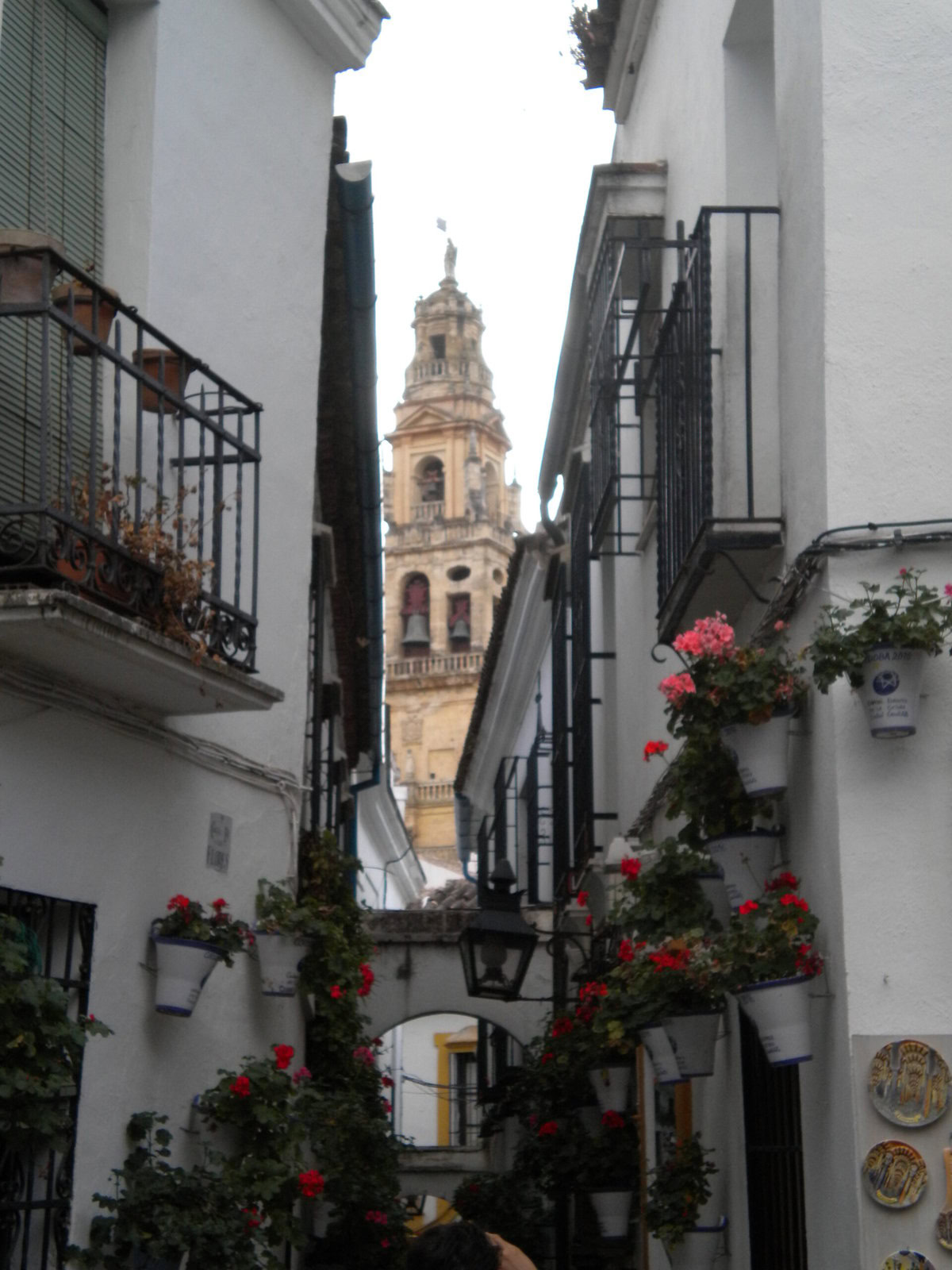
Take A Photograph At Calleja de las Flores
Calleja de las Flores, or the “Alley of Flowers,” is one of Córdoba’s most picturesque and emblematic spots. This narrow street is tucked away in the city’s historic centre. This alley is lined with white-washed walls adorned with vibrant flower pots. At the end of the alley, you are rewarded with a lovely view of the Mezquita-Cathedral, making it one of the most photographed spots in Córdoba.
It’s best to visit early in the morning or late afternoon, as the alley can become quite crowded during peak hours.
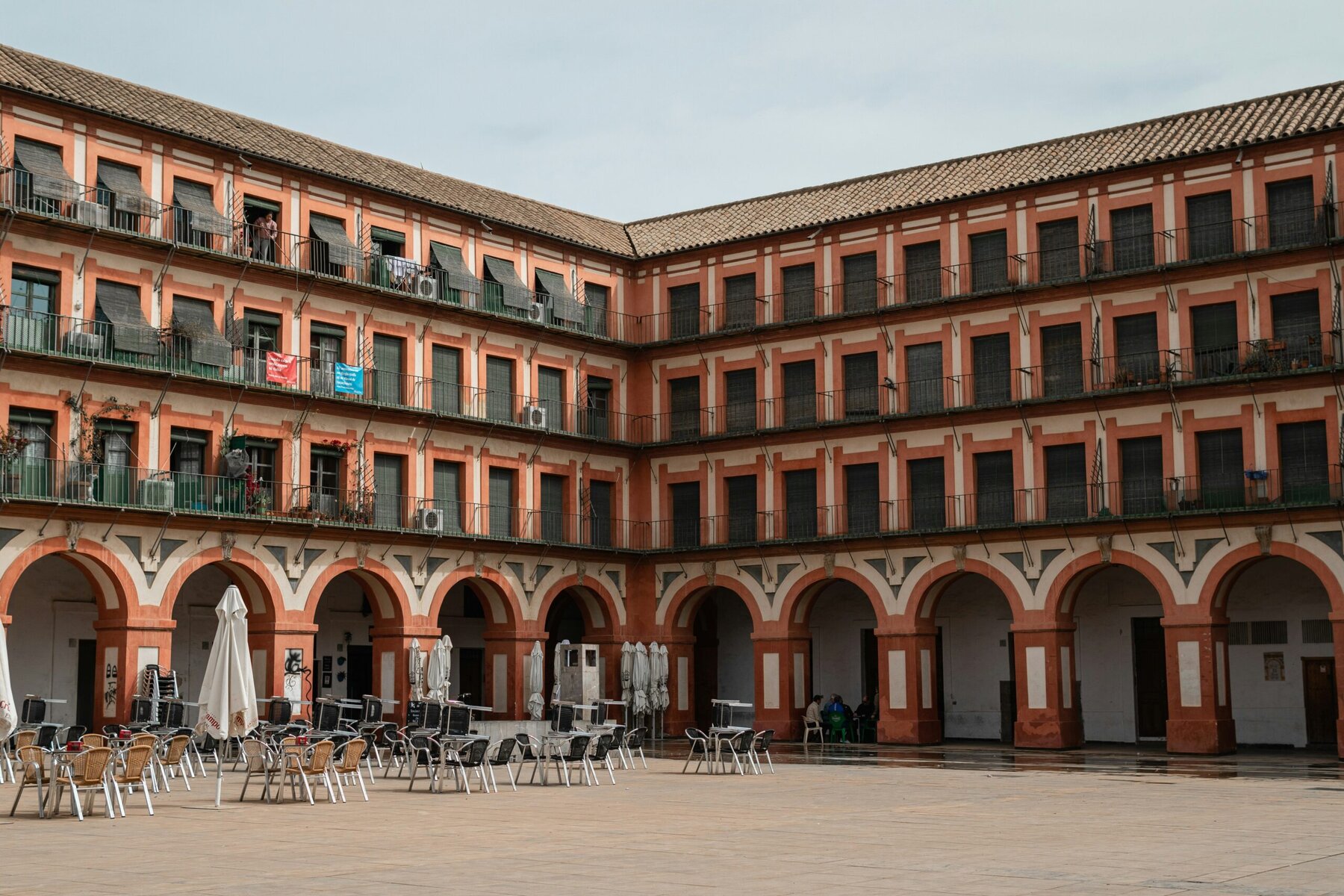
Relax On The Historic Plazas
Córdoba’s plazas are the heart and soul of the city, each offering a unique blend of history, culture, and vibrant local life. These are the best plazas in the city to relax and spend time in.
Plaza de la Corredera – Is a rectangular plaza, located in the centre of the city. Dating back to the 17th century, the plaza was designed in a Baroque style and has served many purposes over the centuries, including a market square, a bullring, and a site for public gatherings. Today, it continues to be a social hub, buzzing with cafés and shops.
One of the plaza’s key features is its symmetry, with carefully arranged rows of windows and arches that exude elegance. Some corners even reveal remnants of the Roman amphitheater that existed in the area long before the plaza was constructed.
In addition to the lively dining spots and shops, you can enjoy the local craftsmanship and artisanal goods sold at pop-up markets or seasonal fairs held in this plaza. Also, keep an eye out for stores tucked away under the arcades, where you might stumble upon unique souvenirs. Finally, look out for the plaques and informational panels that detail the plaza’s rich history, offering insights into its evolution over centuries.
Plaza de las Tendillas – One of the oldest squares in the city. At the centre of the square stands a striking equestrian statue of Gonzalo Fernández de Córdoba, the Gran Capitán. The plaza is also home to noteworthy clock chimes from the Tendillas clock that chime a flamenco guitar tune rather than conventional bells, adding a unique charm. Surrounded by cafes, hotels, and shops, the area is perfect for grabbing coffee or indulging in retail therapy. The square often plays host to public events, performances, and celebrations, especially during festivals. The plaza is also great for visiting in the evening when it comes alive with illuminated fountains and the city’s nightlife.
Plaza del Potro – Another centrally located square, but a bit quieter is the Plaza del Potro. This small, picturesque square is steeped in history and literary significance. One of its central features is the fountain topped with a statue of a foal (potro). This plaza is also home to the Posada del Potro, a former inn which is famously mentioned in Miguel de Cervantes’ Don Quixote. The building is now cultural centre for all things Flamenco.
Also around the plaza, you’ll find the Museo de Bellas Artes (Museum of Fine Arts) and the Museum of Julio Romero de Torres, dedicated to the works of the famous Córdoban painter.
Plaza de Capuchinos – Tucked away from the city’s busier areas, this tranquil square is famous for the Cristo de los Faroles (Christ of the Lanterns), a revered religious sculpture surrounded by glowing lanterns. It’s a popular choice to visit in the evening as the lanterns around the Cristo are lit.
Plaza del Triunfo – Plaza del Triunfo is an unmissable square located beside Córdoba’s most famous landmarks, the Mezquita-Cathedral and the Roman Bridge. This square features the Triunfo de San Rafael, an ornate monument dedicated to Saint Raphael, the city’s patron protector.
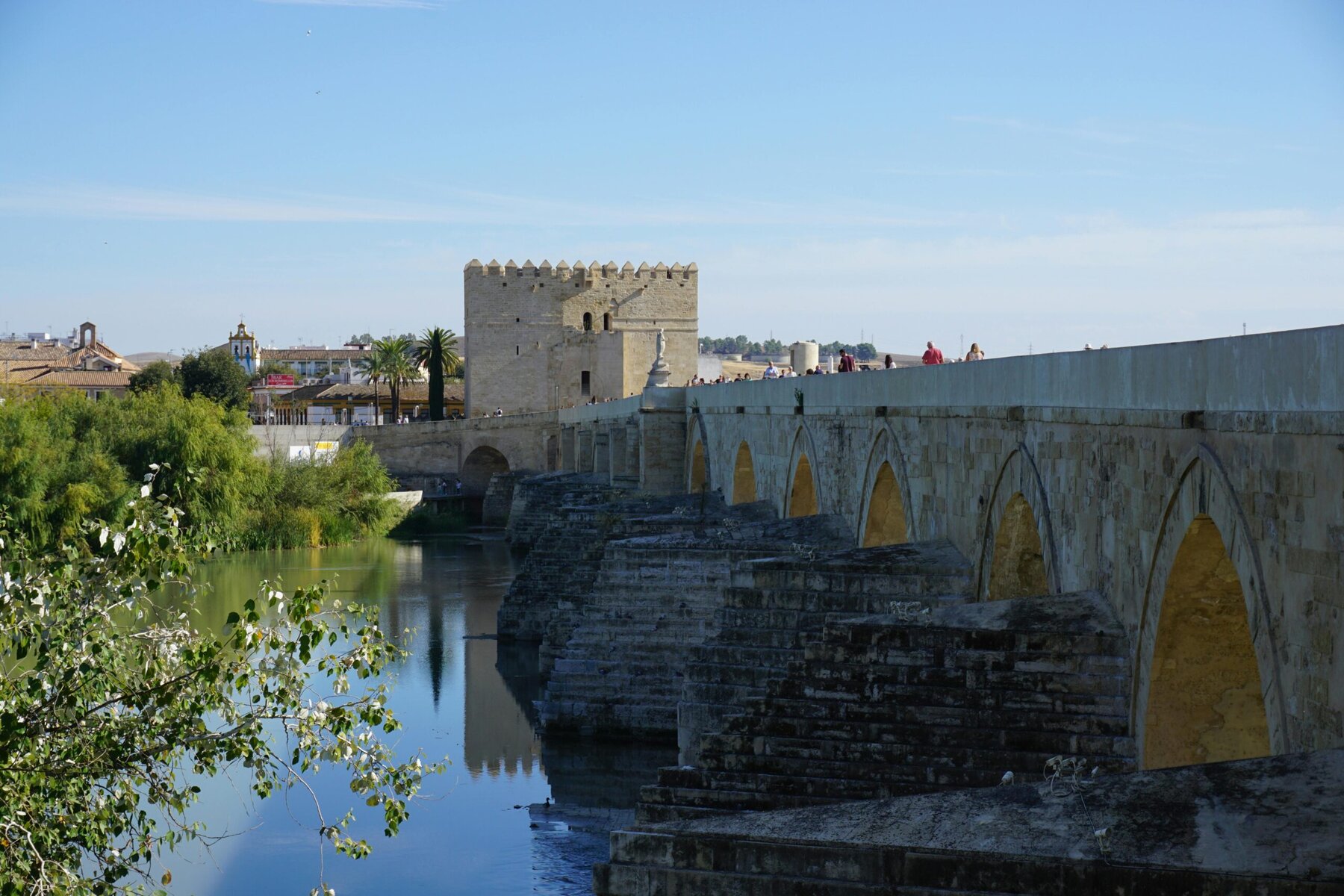
Stroll Across The Roman Bridge (Puente Romano)
The Roman Bridge, or Puente Romano, is another famous city landmark to visit when in Córdoba. Constructed in the 1st century BC by the Romans, this grand structure originally served as a vital link across the Guadalquivir River. Over the centuries, it has been restored and rebuilt multiple times, most notably during the Moorish period, which added unique Andalusian architectural elements to its design. The bridge stretches across 16 impressive stone arches.
Walking along the Roman Bridge offers stunning views of the river and the surrounding cityscape, with the Mezquita-Cathedral in the background. Also on this bridge there is the Calahorra Tower. A medieval fortress that now houses a museum showcasing Córdoba’s fascinating history. Near the far end of the bridge is the Puerta del Puente, a grand gateway framed by Corinthian-style columns, which adds to the bridge’s historical appeal.
Key Information
ℹ️ The bridge is accessible 24/7. To avoid crowds visit early morning or late evening. Also, the bridge is lit up beautifully, so try and include a night time visit too.
ℹ️ Calahorra Tower (Torre de la Calahorra) Opening hours: Winter (October to April): Mon-Sun, 10am-6pm. Summer (May to September): Mon- Sunday, 10am-2pm and 4pm-8pm.
ℹ️ Entrance Fees: There is a general admission fee for around €5. Reduced admission for students, seniors, children etc.
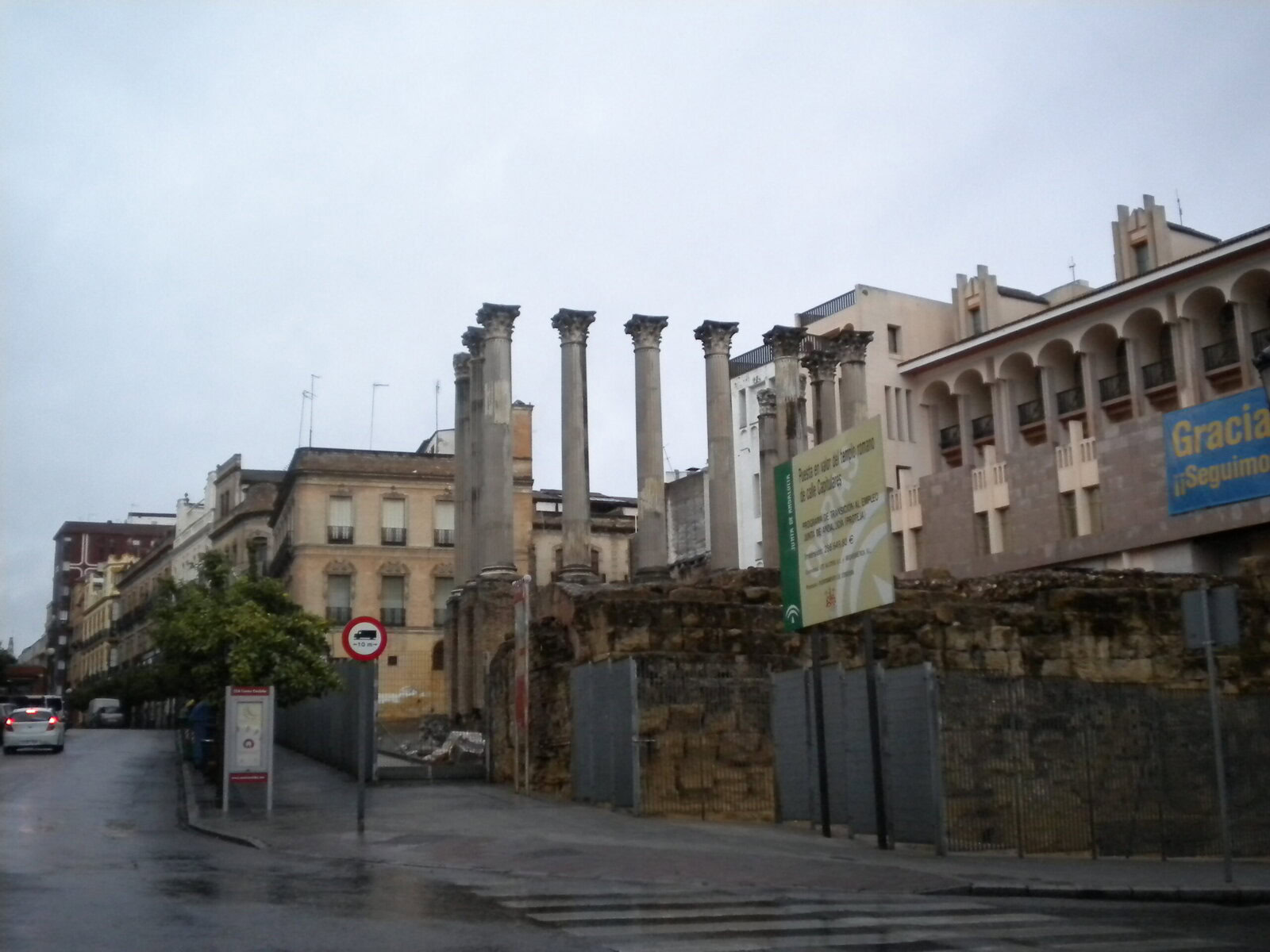
Check Out The Roman Temple
Tucked within the heart of Córdoba’s bustling modern streets you’ll find the remains of the Roman Temple. This temple was originally constructed during the reign of Emperor Claudius in the 1st century AD. Believed to have been dedicated to the imperial cult or Roman gods, it once stood as a majestic complex, a centre for worship, and an emblem of Córdoba’s significance in the Roman Empire.
Today, what remains of the Roman Temple are a number of towering Corinthian columns with carved capitals, along with parts of the base and foundation. Surrounding the ruins, informational displays provide insights into the temple’s history.
Key Information
ℹ️ The Roman Temple is an open-air site with no entrance fee.
ℹ️ Located along Calle Claudio Marcelo, it is a compact site so you don’t need to allocate much time when visiting.
Visit Palacio de Viana (Renaissance Palace)
The Palacio de Viana is a stunning Renaissance palace famously known for its patios. It has 12 meticulously designed courtyards, each showcasing a unique blend of Moorish, Renaissance, and Andalusian styles.
The interior of the palace showcases elegantly furnished rooms with period furniture, intricate tapestries, and an impressive collection of artwork, including paintings and ceramics.
The grand halls, ornate ceilings, and charming living spaces offer a glimpse into the lives of Córdoba’s nobility during the Renaissance and beyond. The palace also has an impressive library filled with antique volumes.
But of course, the true jewel of the Palacio de Viana are its stunning courtyards. The Patio de los Naranjos, for example, is filled with fragrant orange trees and a traditional fountainy. The Patio de las Rejas is known for its lush greenery cascading from iron balconies, while the Patio de los Gatos features vibrant flowerpots and charming décor. Another highlight is the Patio de la Madama, which is home to elegant statues surrounded by colourful plants and flowers. Throughout the patios, you’ll find meticulous landscaping and water features that create a soothing ambiance.
Key Information
ℹ️ Located in the Santa Marina neighbourhood (Plaza de Don Gome), a short walk or taxi from the city centre.
ℹ️ Opening Hours: Tue-Sat 10am-7am. Sundays and Public Holidays: 10am-3pm. Closed on Mondays.
ℹ️ Entrance Fees: There is a general admission fee from €8-10, depending of if you want to visit just the courtyards or both palace and the courtyards. Reduced admission for students, seniors, children etc.
Further Tips
⭐️ Spring is the best time to visit as the courtyards are at their most vibrant; particularly during Córdoba’s famous Patio Festival.
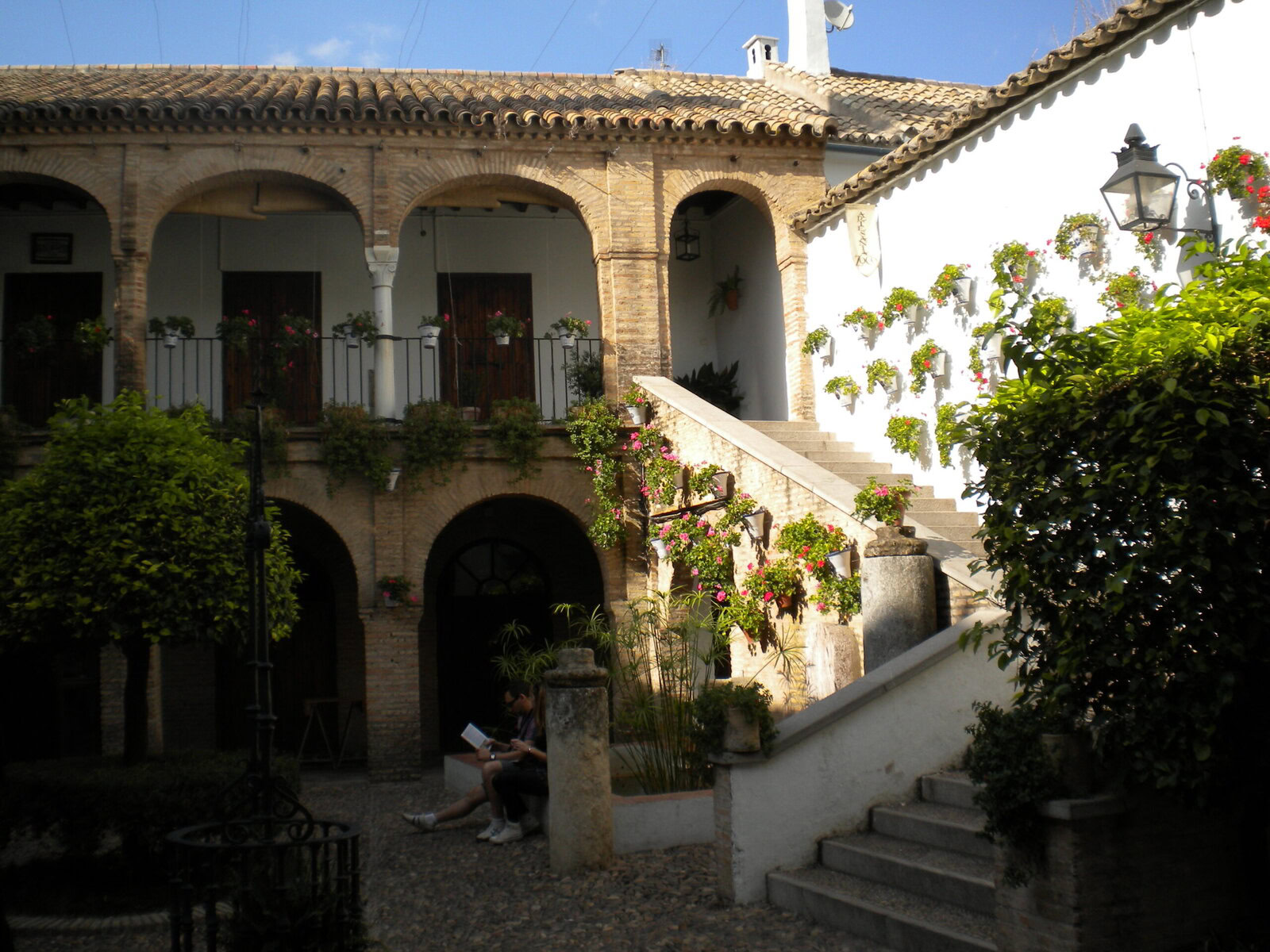
Visit The Archaeological Museum
The Archaeological Museum of Córdoba is a great place to go if you want an in-depth look into the city’s rich and layered history. Located in the historic centre, the museum is housed in the beautiful Renaissance-style Palacio de los Páez de Castillejo, a landmark in itself.
Here you can discover artefacts from prehistoric times to the late Middle Ages. One of the highlights its collection of mosaics, statues, and everyday objects from the Roman period; all reflecting the grandeur of Córdoba when it was a vital Roman colony.
Also, you can see the spectacular remains of the Roman amphitheatre, unearthed right underneath the museum building itself, which you can view through special displays.
Another highlight, is the Islamic art collection, a reminder of Córdoba’s prominence as the capital of Al-Andalus during the Caliphate era. Intricate marble carvings, pottery, and gold coins from this period provide a glimpse into the sophistication of Islamic Spain. The museum also has prehistoric artefacts, such as tools from Paleolithic and Bronze Age settlements, and Visigothic relics, which bridge the narrative between the decline of the Roman Empire and the rise of Islamic rule.
Key Information
ℹ️ Opening Hours – Tue-Sat: 9am-9pm. Sunday: 9am-3pm. Closed on Mondays.
ℹ️ Entrance Fees: General admisision is a few euros. Admission is also free every Sunday, but check ahead.
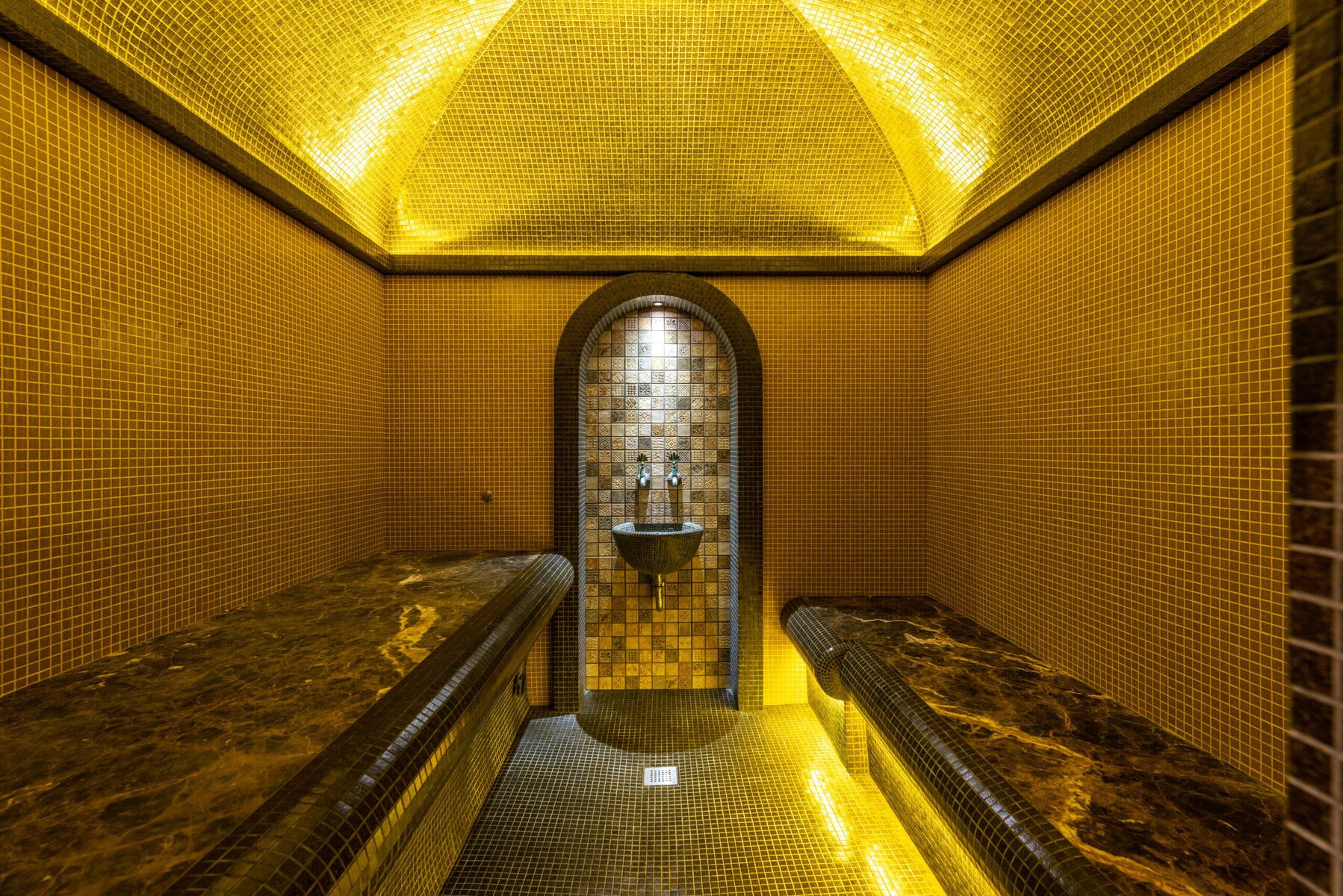
Explore Or Experience A Moorish Bathhouses
The Baños del Alcázar Califal in Córdoba offers a fascinating glimpse into the luxurious lifestyle of the Caliphate era, making it a must-visit for history and architecture enthusiasts. These well-preserved 10th-century Arab baths showcases the advanced engineering and cultural sophistication of Al-Andalus. As you explore the intricate layout of the baths, including the hot, warm, and cold rooms, you’ll gain insight into the social and ceremonial importance of bathing in Islamic culture.
Key Information
ℹ️ Opening Hours
September 16 to June 15: Tue-Sat: 8:30am-7:30pm. Sundays and holidays: 9:30am-2:30pm.
June 16 to September 15: Tue-Saturday: 8:30am-3pm. Sundays and holidays: 8:30am-2:30pm. The baths are closed on Mondays
ℹ️ Entrance Fees: There is a general admission fee for a few euros. Reduced admission for students, seniors, children etc.
If you fancy the full experience of a Moorish-style baths, then Hammam Al Ándalus is the place to go.
This luxurious Arab bathhouse offers a serene and authentic experience reminiscent of Andalusian traditions. It features candle-lit walkways, thermal pools of varying temperatures, steam rooms, and relaxation areas. You can also book some additional body treatments such as massages.
Key Information
ℹ️ Opening Hours – The Hammam Al Ándalus is open daily, and reservations are recommended, especially during peak tourist seasons. Prices vary depending on the package, with options for basic access to the baths or upgraded experiences that include massages. For a quieter experience, consider booking during weekday mornings or late evenings. Don’t forget to bring a swimsuit, as it’s required for entry.
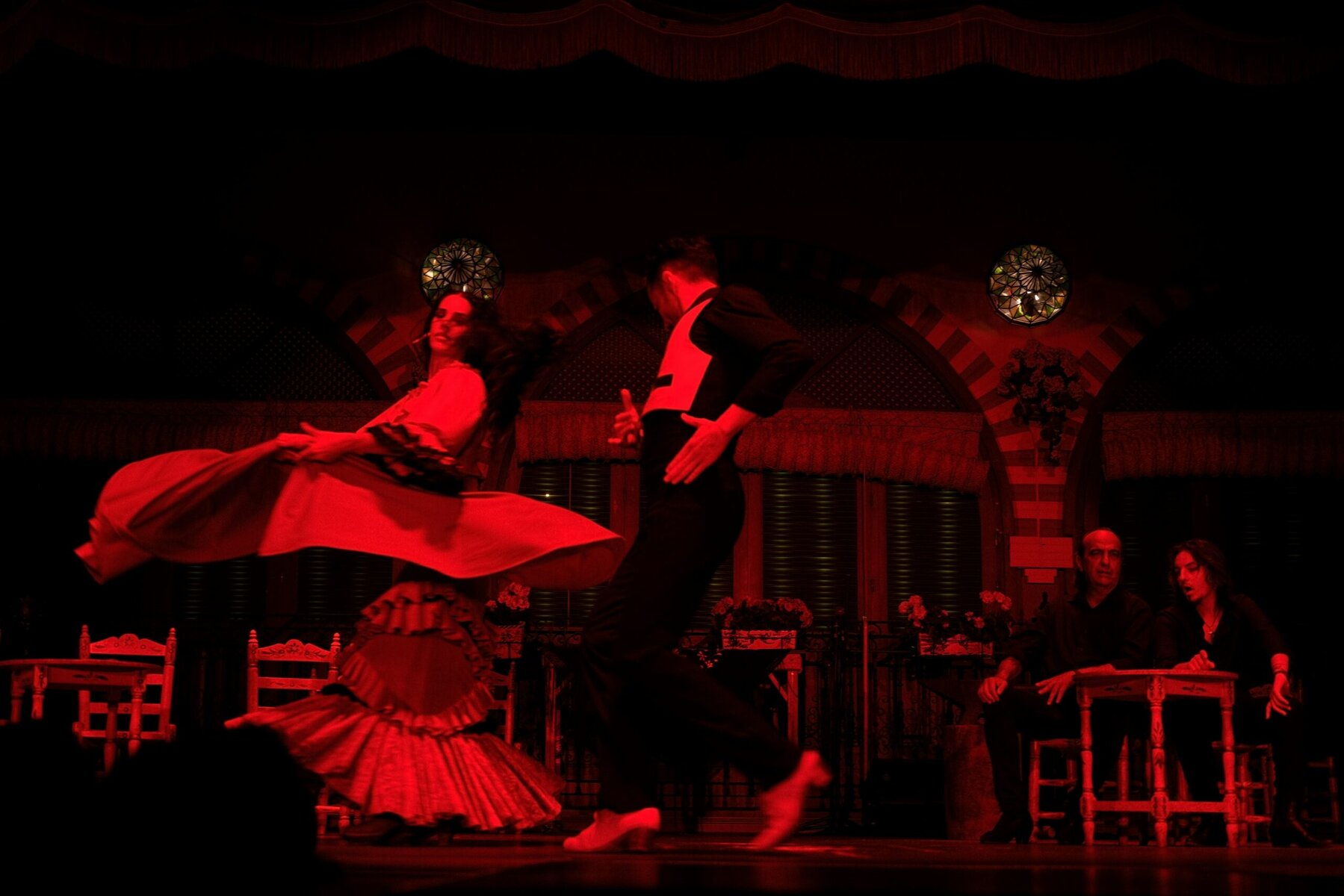
Experience Flamenco
Experiencing flamenco in Córdoba is one of the best things to do in here as it offers some of the most authentic and intimate flamenco performances in Spain.
One of the top spots to enjoy live flamenco is Tablao El Cardenal, a historic venue tucked in the heart of Córdoba. Known for its top-tier performances, this tablao features talented singers, guitarists, and dancers in an intimate courtyard setting adorned with traditional Andalusian decor.
Another exceptional venue is Casa de la Guitarra, an equally intimate location dedicated to showcasing the raw essence of flamenco with a focus on acoustic performances.
If you are seeking a more laid-back atmosphere, then La Posada del Potro hosts free flamenco shows.
Beyond the performances, Córdoba also offers incredible opportunities to explore flamenco’s roots at the Centro Flamenco Fosforito, located in the aforementioned La Posada del Potro. This cultural centre serves as a museum and homage to flamenco, offering exhibits, recordings, and artefacts detailing the history and evolution of the art form.
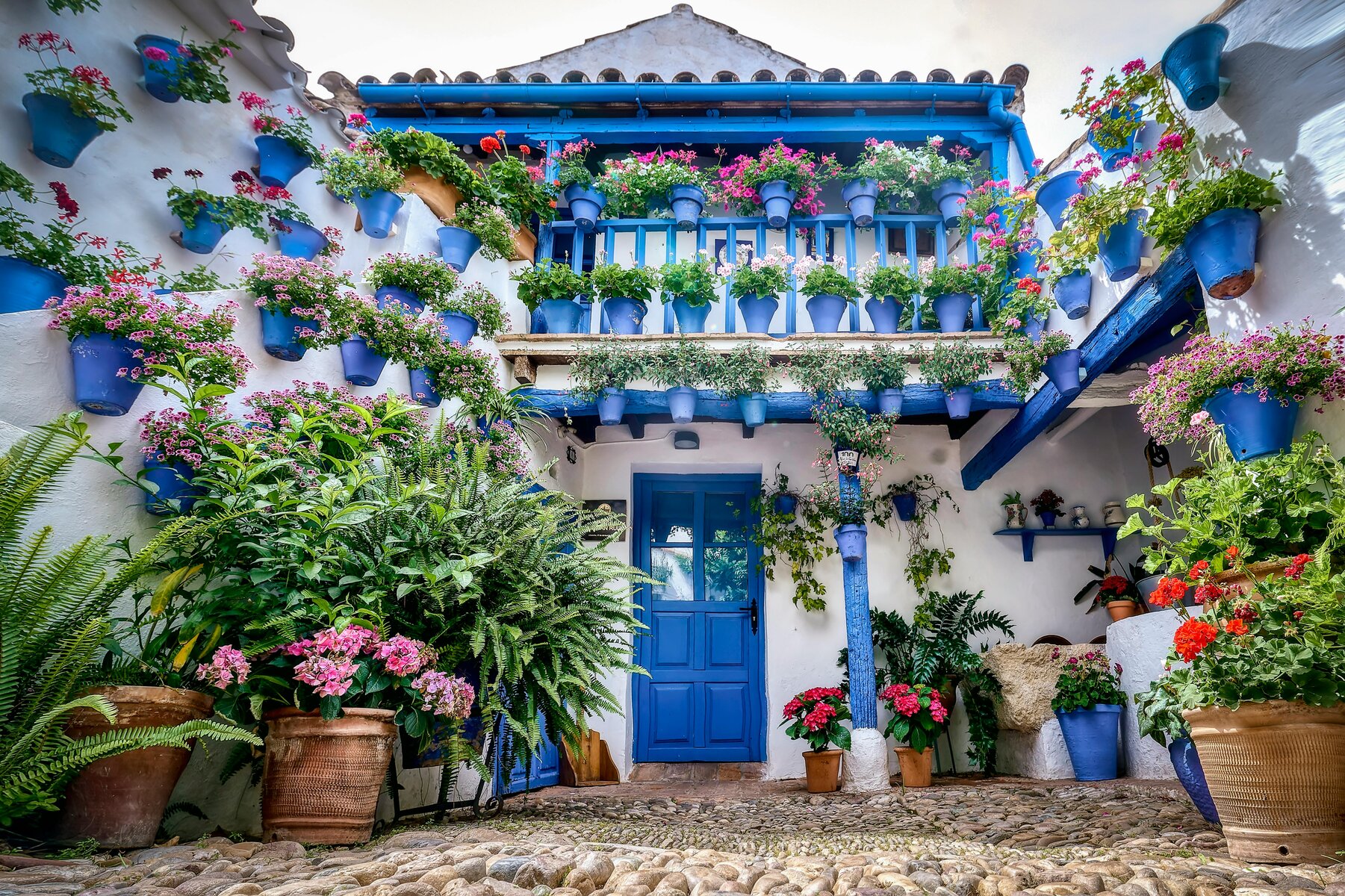
Attend The Patios Of Córdoba In May
The Patios of Córdoba Festival, held annually in May, is a vibrant celebration of the city’s unique floral courtyards, recognized as UNESCO Intangible Cultural Heritage.
During this festival, residents open their private patios, adorned with colourful flowers, lush greenery, and tinkling fountains, to the public, creating a magical atmosphere.
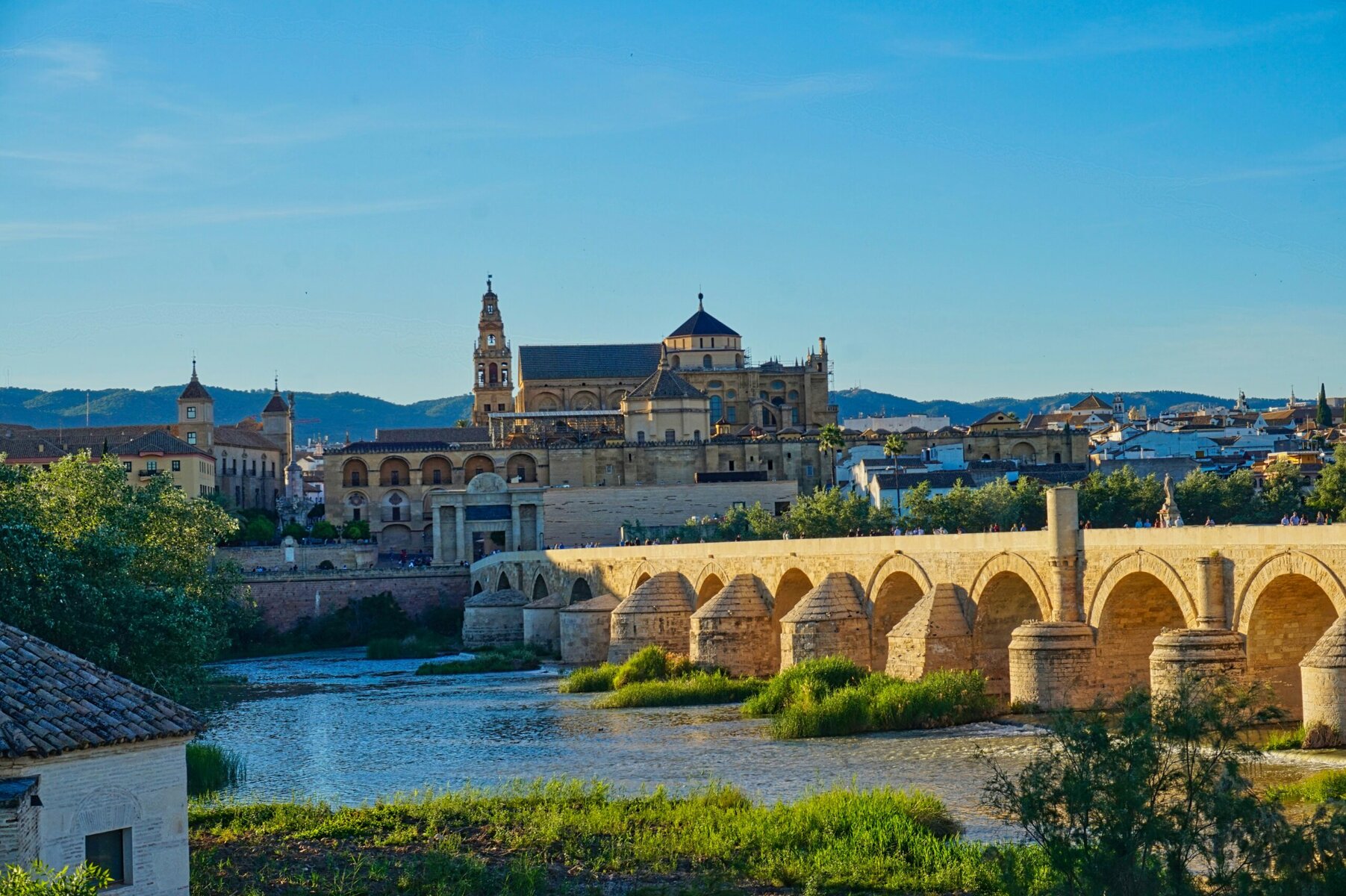
So To Wrap Up On The Best Things To See & Do In Córdoba…
Córdoba is a city full of rich history, breathtaking architecture, and vibrant cultural traditions. From wandering through the ethereal beauty of La Mezquita to exploring the enchanting courtyards and medieval streets there are so many great things to see and do. So start planning your visit to this wonderful historic city.
Further FAQs
How To Get To Córdoba
Getting to Córdoba, Spain, is convenient and straightforward, with several travel options available depending on your starting point.
From major cities like Madrid, Seville, and Málaga, the high-speed AVE train is the most efficient choice. From as little as one hour from Seville and and under 2 hours from Málaga and Madrid.
Buses are a cost-effective alternative, connecting Córdoba to regional towns and neighbouring cities, though travel times are of course usually longer than by train.
If you’re driving, Córdoba is well-connected via major highways, such as the A-4 from Madrid or Seville, offering a scenic and flexible option for road-trippers.
Córdoba does have a small airport with some domestic flights. However, for international travellers, flying into Seville, Málaga, and Madrid are the better options.
When To Go To Córdoba
The best time to visit Córdoba, Spain, is during the spring months, particularly in May, when the city bursts into vibrant life with the celebrated Patios Festival. The mild temperatures and floral displays create an enchanting atmosphere perfect for exploring the city’s historic streets.
Autumn is another ideal season, offering comfortable weather, fewer crowds, and a more relaxed pace, making it great for sightseeing.
Summer, however, can be less appealing for some due to the intense heat, often exceeding 40°C (104°F). If you plan to visit during popular festivals or events, be sure to book accommodations well in advance, as demand is high during these peak times.
How Much Time To Spend In Córdoba
Like with many city’s, one day can be sufficient to cover the iconic highlights, such as the stunning La Mezquita, the historic Roman Bridge, and a stroll through the charming Jewish Quarter.
However, spending 2-3 days in Córdoba gives you more than enough time to explore all the key sites and really enjoy the city. Recommendation is at least 2 full days.
Where To Stay In Córdoba
When deciding where to stay in Córdoba , you’ll find options to suit every preference and budget. Here are the hotels to stay based on preferences and budgets.
(These hotels are strategically located near Córdoba’s main attractions, such as the Mezquita, Alcázar, and the Roman Bridge, ensuring a convenient and memorable stay).
The Best Luxury Hotels Options
Hospes Palacio del Bailio: A five-star gem blending Moorish charm with modern luxury. Located in the old town, great rooms, a pool and spa.
Eurostars Palace: Situated between the old and new parts of Córdoba, this hotel offers panoramic city views, a rooftop pool, and modern design.
Balcón de Córdoba: A boutique hotel with a rooftop terrace and situated very close to the Mezquita. Its charming rooms and central location make it a great choice.
The Best Boutique Hotels Options
Hotel Madinat: Located in the old town, this boutique hotel features unique decor, a tranquil courtyard, and a two rooftop terraces. Its locations excellent with many of the top sites just a five minute walk away.
Las Casas de la Judería: A collection of beautifully restored 17-18th century houses with patios, fountains, and a pool, located in the historic Jewish Quarter.
The Best Mid-Range Options
Hotel Viento 10: A stylish hotel with modern amenities, located close to the Mezquita. It features a relaxing and a rooftop terrace. A very good option.
NH Collection Amistad Córdoba: A charming hotel in the old town with modern rooms, a pool, fitness centre and great proximity to major attractions.
The Best Budget-Friendly Choices
Los Patios: Located near the Mezquita, this hotel offers clean rooms, WIFI, a terrace, and a central location. Great value.
Hotel Maestre: A budget-friendly option with a historic feel, offering clean rooms and great location.
The Best Unique Stay
La Ermita Suites: Set in an 18th-century chapel, this hotel combines historic charm with modern comforts. This is a great option for a unique stay.
For another great Spanish city gem, read Best Things To Do In Salamanca blog post.
